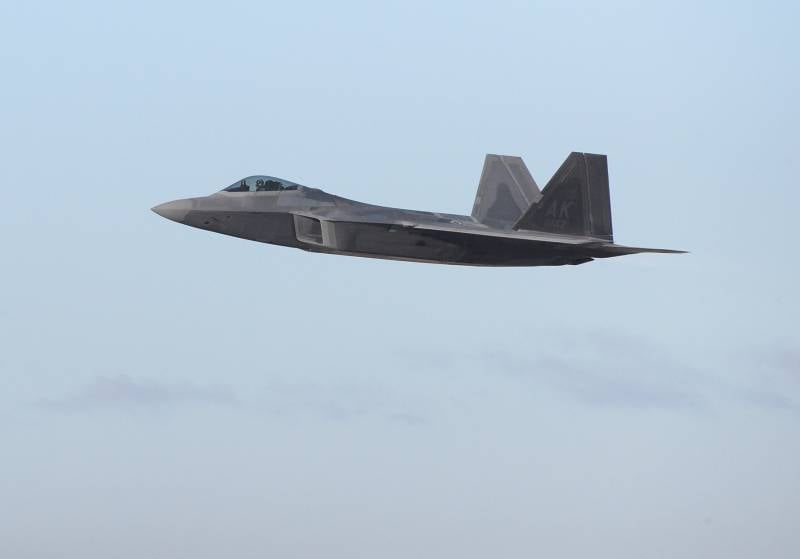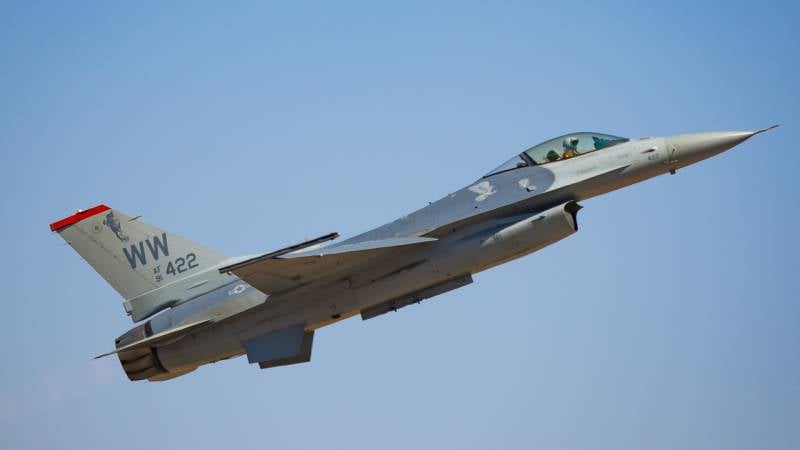Quality over Quantity: US Air Force Fleet Development Plans
The Pentagon and Congress are working on plans for the development of the air force for the next year and the long term. Given the current situation and the expected threats, the military department offers a set of key measures and solutions, but they do not fully suit the legislators. This leads to controversy and potentially threatens the future of the Air Force. However, the two departments have already found common ground on some issues and look forward to further progress in this area.
Actual problems
According to available data, the US Air Force fleet includes approx. 5500 aircraft of all classes and types. This number includes combat, support and special aircraft and helicopters, various Drones, gliders, etc., both in active operation and in storage. Such quantitative indicators are in line with the plans of the Pentagon and the tasks set.
The combat readiness of the Air Force is of great importance. According to Defense News, at the beginning of FY2022. (autumn of calendar 2021), 71,5% of the equipment in service was suitable for solving training and combat missions. A year earlier, this figure was 1,2% higher.
At the same time, we are talking only about the average indicators for the Air Force as a whole. Some samples aviation technicians demonstrate less readiness and higher rates of its decline. For example, in the fleet of F-22A fighters and B-1B strategic bombers in recent years, only 50-60 percent were ready for immediate missions. technology, and this figure has been slowly declining.
Such processes do not yet have a critical impact on the state and capabilities of the Air Force as a whole. However, they cannot be ignored - otherwise, risks will arise both for military aviation and for national security as a whole. In this regard, over the past few years, the Air Force and the Pentagon have been making various plans and trying to get them through Congress.
Quality at the price of quantity
At the beginning of April, curious data about the possible plans of the Pentagon were heard in the Senate. One of the senators, referring to the documents received, said that the military department is going to decommission 1468 aircraft over the next five years, 369 of them this year. During the same period, they want to buy only 467 new ones. All this will lead to a reduction in the fleet by 1001 units. or 15%.
The Air Force did not comment on the statements in the Senate. At the same time, there was immediately a reason to doubt the sounded information. The fact is that the military budget for the current financial year provides for the withdrawal of only 150 units. technology. Another 100 units. transferred to other departments. In total, the Air Force must lose 250 vehicles - which is 119 less than what was approved in the Senate. How such a discrepancy arose, and where the information about the reduction of the fleet by 1001 units came from, is unknown.
However, in recent years the Pentagon has indeed proposed to reduce the active fleet and the reserve by abandoning obsolete equipment. Planes and helicopters should go under reduction, which have not yet exhausted their resources, but no longer meet all current requirements and are "unable to survive in the battles of the future." The money saved should go to promising technology.
For example, in the original draft military budget for FY2023. it was proposed to write off 21 A-10C attack aircraft and replace them with the same number of F-16 fighter-bombers. 36 existing F-22A fighters do not meet the requirements for combat use and are used as training ones. 33 of them are proposed to be withdrawn from service. The Air Force has 31 AWACS E-3 aircraft; Of these, only 16 are going to remain in service.
It is also proposed to write off other types of aircraft and helicopters, but in this case we are talking only about the planned renewal of the fleet. Older planes and helicopters will be put into reserve or sent for recycling, and new products and/or modern modifications will come in their place. At the same time, a fundamental change in the number of equipment is not expected.
In the process of approval
In mid-June, the Pentagon's proposals passed through the Senate Defense Committee. The legislators only partially agreed with the plans for the development and re-equipment of the Air Force. Some clauses about the reduction of technology have been approved, while others will have to be abandoned.
The Senate Committee approved the decommissioning of 21 A-10C attack aircraft. At the same time, aircraft that retain a significant part of the resource should be transferred to the National Guard. The purchase of F-16 fighters to replace attack aircraft is also allowed. Thus, the senators agreed with the Pentagon, which believes that the A-10C no longer meets current requirements and can be decommissioned.
A proposal to write off 33 F-22A fighter jets used as trainers has not been approved. The Senate fears that such a move will hit the training system for personnel. In this regard, the Air Force must submit a detailed plan for the development of the fleet of training aircraft and the training of personnel. If this document suits lawmakers, then the Pentagon will be able to decommission its F-22A.
The Senate committee as a whole is not opposed to decommissioning the obsolete E-3 aircraft. However, it is necessary to take measures to create a replacement for them as soon as possible so that the Air Force is not left without critical equipment. Due to savings on decommissioned E-3s, it is proposed to increase funding for the promising E-7 Wedgetail project. However, such steps do not exclude possible problems. The fact is that the experienced E-7s are expected only in 2027 or later - four years after the start of decommissioning of the front-line E-3s. As a result, any delay with the new project threatens the entire AWACS fleet.
The Senate Committee approved not only the decommissioning and replacement of equipment, but also an increase in the purchase of serial samples in the next fiscal year 2023. Thus, plans for the acquisition of F-35A fighters were increased by 7 units, and the Air Force will receive 40 such aircraft in a year. Provision is made for the purchase of 10 EW EC-37B aircraft. The Air Force will be allowed to buy 20 HH-60W helicopters - double their original request.
It should be noted that the draft military budget, after passing through the Senate Committee, does not provide for a radical reduction in the total number of aircraft. We are talking only about dozens of aircraft or UAVs of several types. It is easy to see that all this does not correspond to the April information about the upcoming write-off of 1001 units over five years.
In mid-July, the White House commented on all these processes and proposals. The Office of Management and Budget of the President's office said it strongly protested some of the Congressional proposals. Legislators are blocking the White House's efforts to reduce "low priority platforms", and in the context of the Air Force, this leads to an increase in the budget by $ 840 million. It is noted that the draft military budget was prepared taking into account all needs and possibilities, and any increase must be justified.
Striving for the best
Thus, at present, the US Air Force fleet as a whole is in good condition and basically meets the requirements and wishes of the command. At the same time, the situation differs in different directions. For example, tactical aviation is distinguished by high combat readiness, while the state of strategic aviation is far from ideal.
The Pentagon analyzes the current situation and proposes various measures for the development of the Air Force. These proposals take into account the state of existing technology, the processes for creating a new one, as well as current and expected threats. And all the proposed measures are reflected in the draft military budget, which is now going through all the necessary authorities.
According to the latest news, the Pentagon and Congress plan to keep the size of the Air Force fleet at about the current level, although some reductions are possible. At the same time, a constant and systematic renewal of the park is necessary, and not only because of the development of the resource. Perspective threats and challenges are forcing us to pay more and more attention to new models, as well as to abandon obsolete or close to losing the necessary potential.
Apparently, in the near future in the military budget for 2023 FY. and in its part reserved for the Air Force, certain changes will again be made. The volume of purchases of new aircraft or the rate of decommissioning of old ones may change. However, the general trends are likely to remain the same. The course to improve quality indicators will be maintained, incl. through reasonable reductions in quantity.





Information